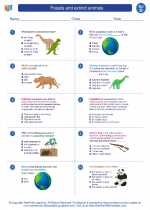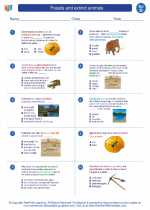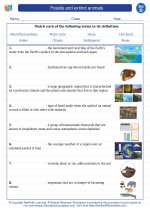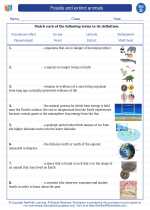Marine Life
Marine life refers to the plants, animals, and other organisms that live in the ocean. The marine environment is diverse and includes a wide variety of habitats, from coral reefs to deep sea trenches. Understanding marine life is important for maintaining the health of the oceans and for preserving biodiversity.
Types of Marine Life
There are countless species of marine life, but they can generally be divided into several categories:
- Fish: Fish are some of the most common marine animals and come in a wide range of shapes, sizes, and colors. They can be found in all parts of the ocean, from shallow coastal waters to the deepest depths.
- Invertebrates: This group includes animals like corals, jellyfish, and sponges. They lack a backbone and make up a significant portion of marine biodiversity.
- Marine mammals: Whales, dolphins, seals, and sea lions are examples of marine mammals that have adapted to life in the ocean.
- Marine reptiles: Sea turtles and marine iguanas are examples of reptiles that have adapted to life in the ocean.
- Plants: Marine plants like seaweed and seagrass play a vital role in ocean ecosystems, providing food and habitat for many marine animals.
Importance of Marine Life
Marine life is essential for the health of the planet. It provides a source of food for people around the world and supports important industries like fishing and tourism. Marine life also plays a crucial role in regulating the Earth's climate and in nutrient cycling.
Threats to Marine Life
Unfortunately, marine life faces numerous threats, including overfishing, habitat destruction, pollution, and climate change. These threats can have devastating effects on marine ecosystems and the animals that depend on them.
Study Guide
Here are some key topics to study when learning about marine life:
- The different types of marine organisms and their adaptations to life in the ocean.
- The importance of marine biodiversity and the role of marine ecosystems in supporting life on Earth.
- The impact of human activities on marine life and the steps that can be taken to protect marine ecosystems.
- The ways in which marine life is studied and monitored, including techniques for tracking populations and assessing the health of marine environments.
By understanding marine life and the challenges it faces, we can work towards preserving the health and diversity of our oceans for future generations.
.◂Science Worksheets and Study Guides Fourth Grade. Fossils and extinct animals

 Worksheet/Answer key
Worksheet/Answer key
 Worksheet/Answer key
Worksheet/Answer key
 Worksheet/Answer key
Worksheet/Answer key
 Vocabulary/Answer key
Vocabulary/Answer key
 Vocabulary/Answer key
Vocabulary/Answer key
 Vocabulary/Answer key
Vocabulary/Answer key
 Vocabulary/Answer key
Vocabulary/Answer key
